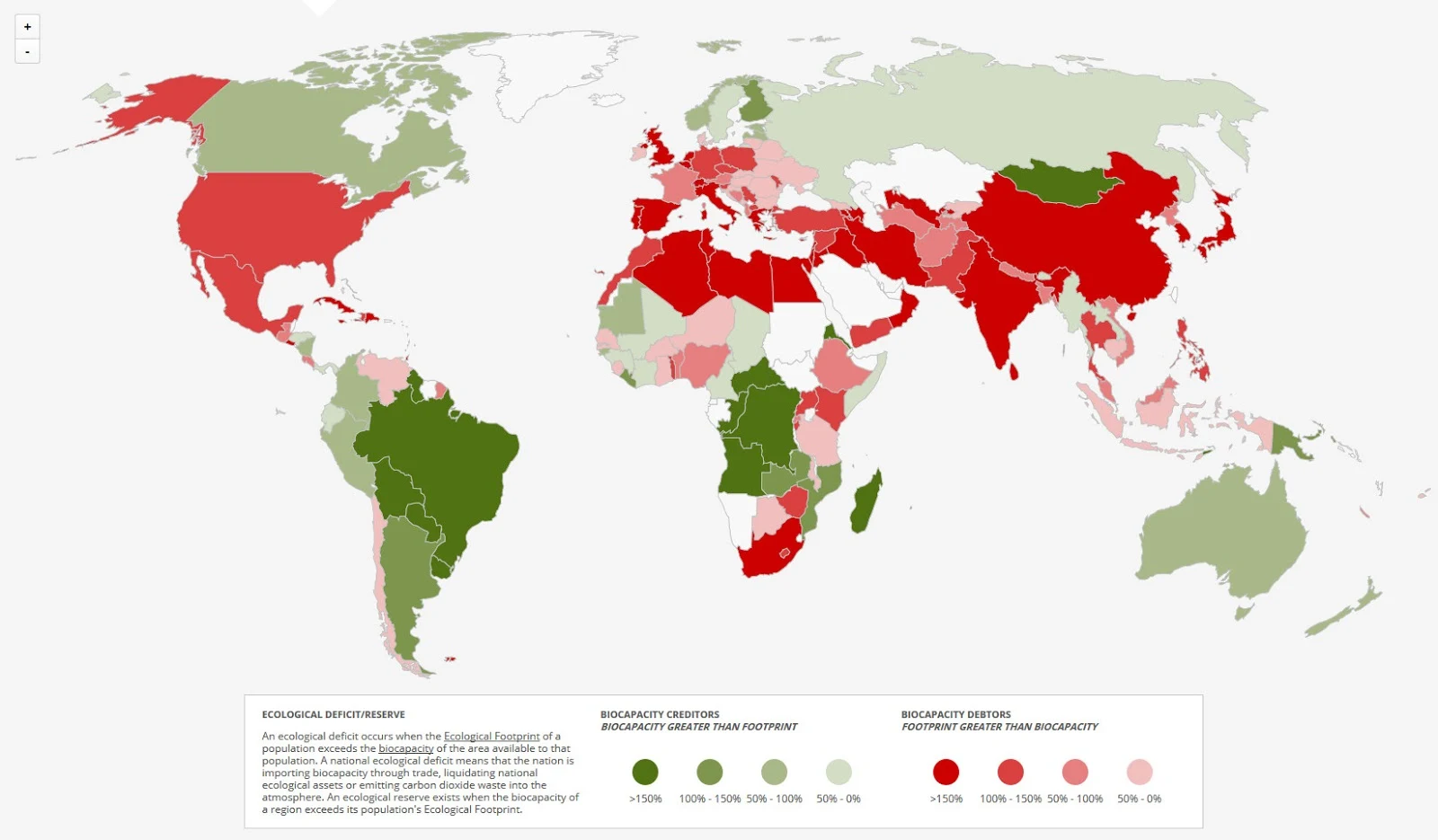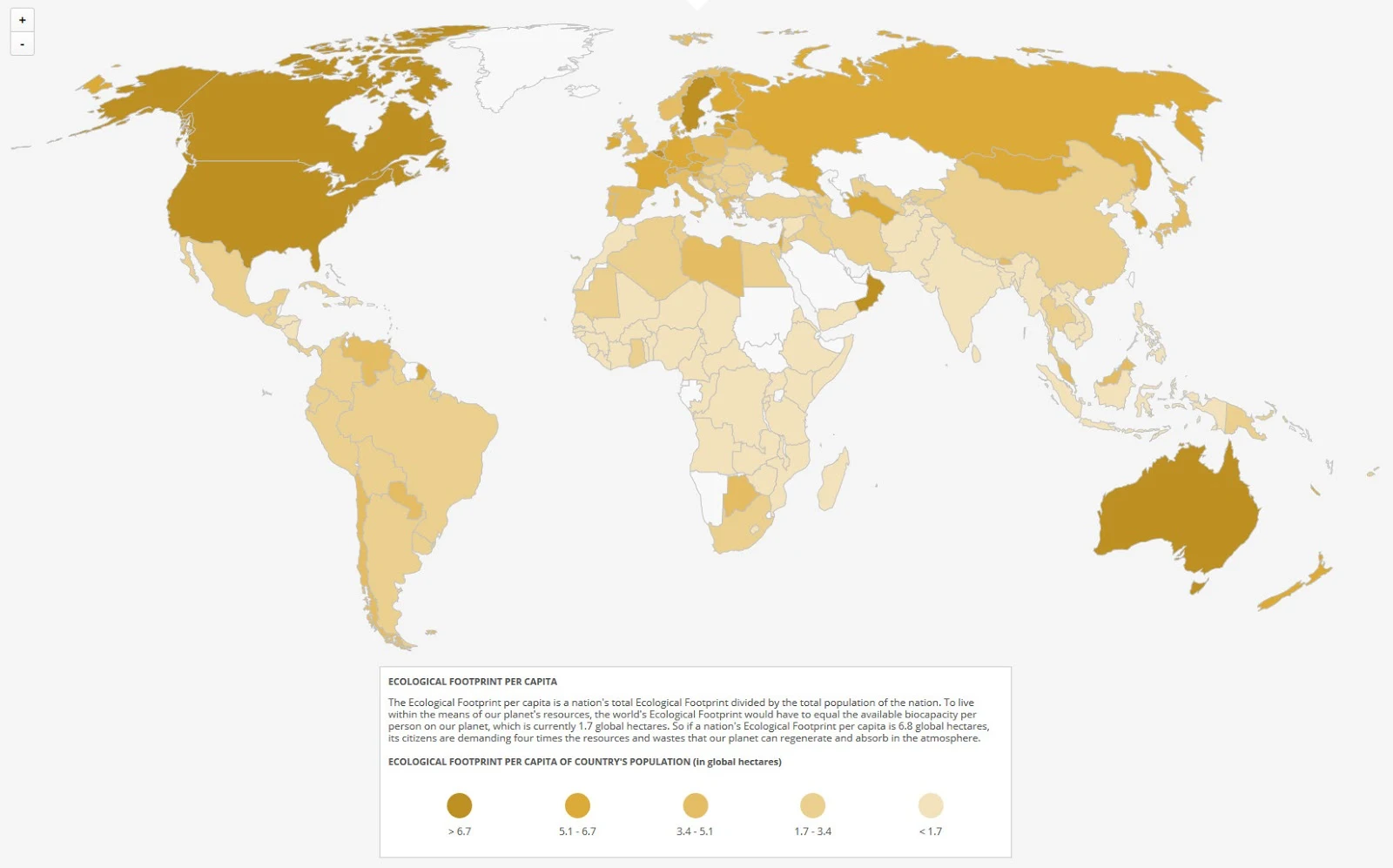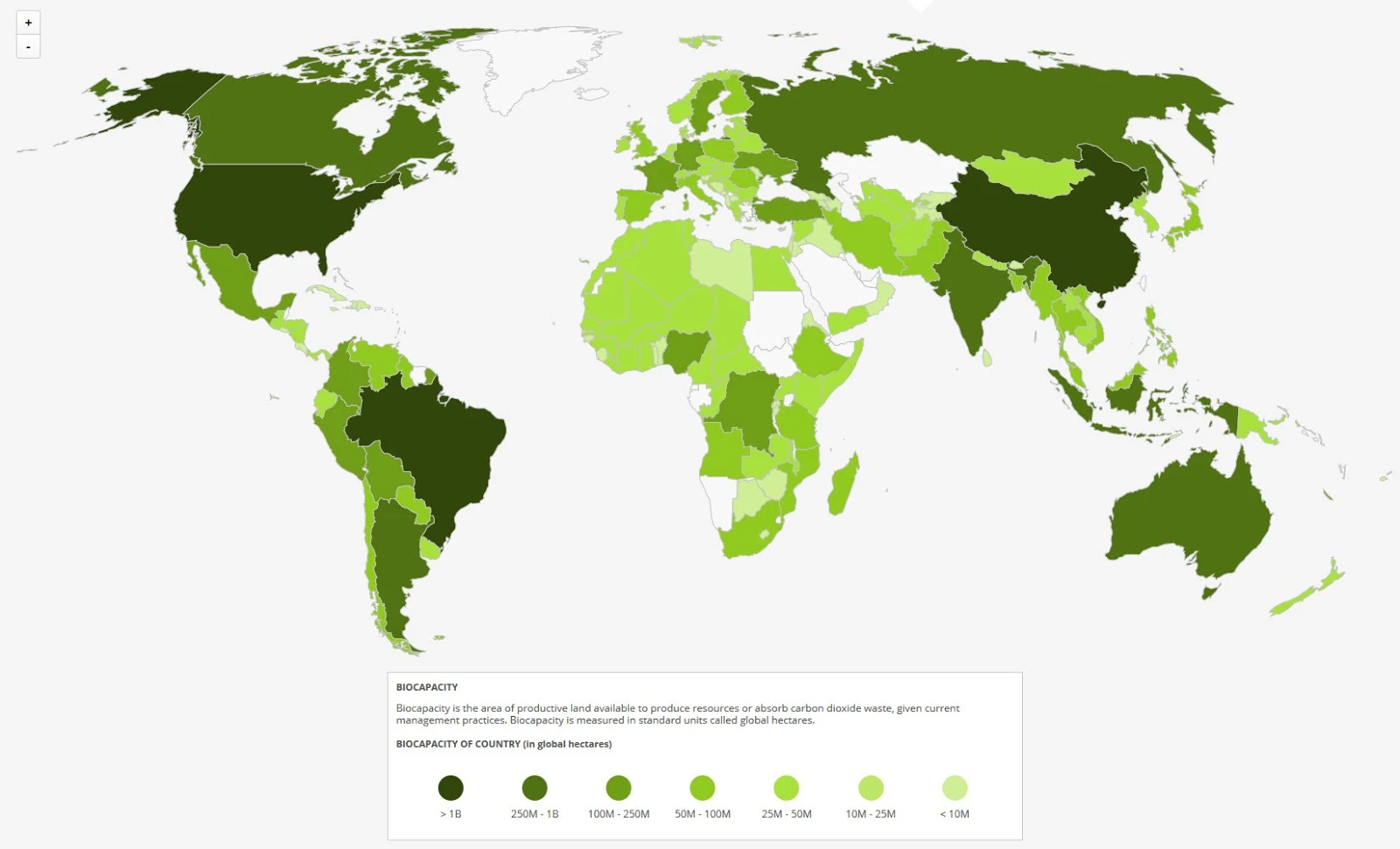Ecological assets are at the core of every nation's long-term wealth. Yet today, population growth and consumption patterns are putting more pressure on our planet's ecosystems, as seen in water shortages, reduced cropland productivity, deforestation, biodiversity loss, fisheries collapse and climate change. Ecological Footprint accounting compares how much demand human consumption places on the biosphere (Ecological Footprint) to the area, or supply, of productive land available to meet this demand (biocapacity). Both Footprint and biocapacity are measured in global hectares. Footprint accounting exposes the unique risks and opportunities that natural resource constraints pose to each nation.
Ecological Deficit/Reserve
An ecological deficit occurs when the Ecological Footprint of a population exceeds the biocapacity of the area available to that population. A national ecological deficit means that the nation is importing biocapacity through trade, liquidating national ecological assets or emitting carbon dioxide waste into the atmosphere. An ecological reserve exists when the biocapacity of a region exceeds its population's Ecological Footprint.
Ecological footprint
The Ecological Footprint measures how much demand human consumption places on the biosphere. It is measured in standard units called global hectares.
Ecological footprint per capita
The Ecological Footprint per capita is a nation's total Ecological Footprint divided by the total population of the nation. To live within the means of our planet's resources, the world's Ecological Footprint would have to equal the available biocapacity per person on our planet, which is currently 1.7 global hectares. So if a nation's Ecological Footprint per capita is 6.8 global hectares, its citizens are demanding four times the resources and wastes that our planet can regenerate and absorb in the atmosphere.
Biocapacity
Biocapacity is the area of productive land available to produce resources or absorb carbon dioxide waste, given current management practices. Biocapacity is measured in standard units called global hectares.
Biocapacity per capita
Biocapacity per capita equals total biocapacity of a region divided by the region's population. The average biocapacity per person for the entire world is 1.7 global hectares. Countries with an average biocapacity of 3.4 global hectares per person have twice as many resources as the world average.
Via www.footprintnetwork.org
Ecological Deficit/Reserve
An ecological deficit occurs when the Ecological Footprint of a population exceeds the biocapacity of the area available to that population. A national ecological deficit means that the nation is importing biocapacity through trade, liquidating national ecological assets or emitting carbon dioxide waste into the atmosphere. An ecological reserve exists when the biocapacity of a region exceeds its population's Ecological Footprint.
Ecological footprint
The Ecological Footprint measures how much demand human consumption places on the biosphere. It is measured in standard units called global hectares.
Ecological footprint per capita
The Ecological Footprint per capita is a nation's total Ecological Footprint divided by the total population of the nation. To live within the means of our planet's resources, the world's Ecological Footprint would have to equal the available biocapacity per person on our planet, which is currently 1.7 global hectares. So if a nation's Ecological Footprint per capita is 6.8 global hectares, its citizens are demanding four times the resources and wastes that our planet can regenerate and absorb in the atmosphere.
Biocapacity
Biocapacity is the area of productive land available to produce resources or absorb carbon dioxide waste, given current management practices. Biocapacity is measured in standard units called global hectares.
Biocapacity per capita
Biocapacity per capita equals total biocapacity of a region divided by the region's population. The average biocapacity per person for the entire world is 1.7 global hectares. Countries with an average biocapacity of 3.4 global hectares per person have twice as many resources as the world average.
Via www.footprintnetwork.org





This post may contain affiliate links. As an Amazon Associate, I earn from qualifying purchases.